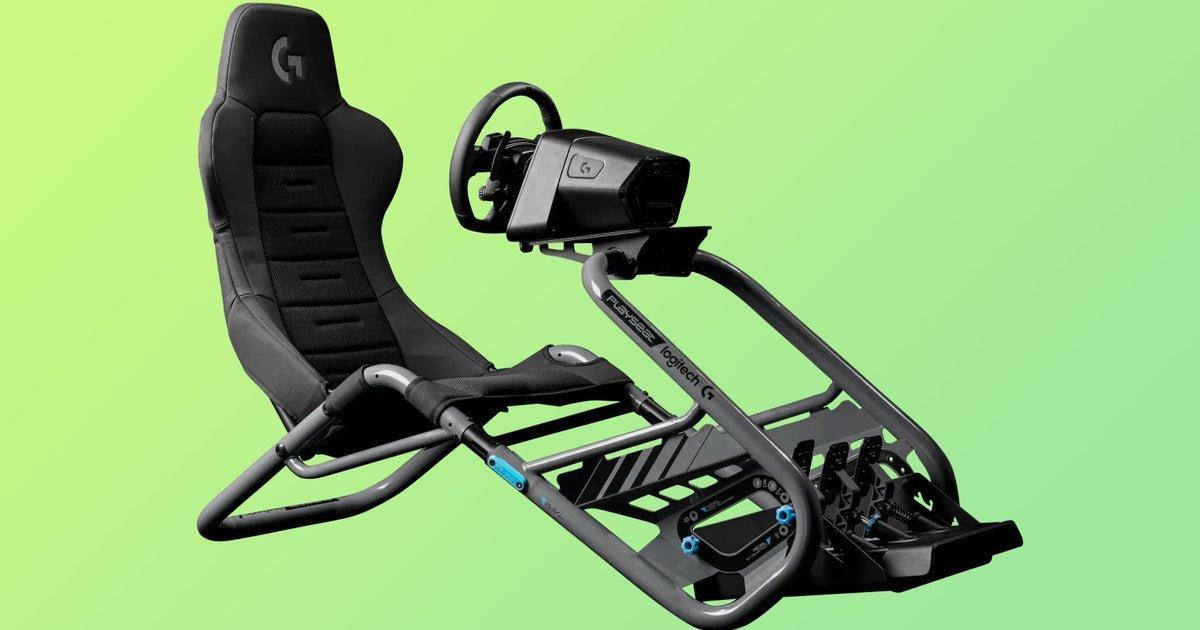
Logitech G Pro Racing Wheel: A New Era in Racing Simulators
Logitech is no stranger to racing peripherals, with its G29 wheel being an economical choice since the days of the PS4 – and previous wheels being a popular choice since the turn of the millennium. What’s new is a focus on high-quality simulation gear, which this year includes a Pro Racing Wheel direct drive wheel, Pro Racing pedals with load cell, and a Logitech G Edition Playseat Trophy racing cockpit. This combination basically ticks all the boxes for an enthusiast-level setup, and at a total of 1950 euros, it certainly has a price tag to match – although you can spend much more on racing setups.
Testing the Logitech Professional Racing Setup
I’ve been testing the Logitech professional racing setup for the past few months, both on PC and on the PS5, so it’s time to share some thoughts – focusing on how Logitech’s offerings stack up against other direct drive wheels I’ve tested from Fanatec and Thrustmaster, and how the Trophy compares to other mid-range cockpits like the Playseat Challenge and the NextLevelRacing GTTrack that I reviewed last year.
Design and Features
The wheel base has a vaguely trapezoidal shape, with a wide base and a narrower top that fits perfectly in the racing cockpits I had available (unlike the narrow base of the Thrustmaster T818 I tested previously). With its plastic construction, it looks a bit less high-end than the base of Fanatec’s GT DD Pro wheel and the Thrustmaster T818, but the 11NM motor inside actually outperforms both options (5NM and 10NM, respectively). The USB and AC connections are located on the rear of the base, allowing for accessory connection (like pedals and switches), power, and your PC or console.
Meanwhile, the plastic-seamed rim with synthetic leather wrap represents an improvement in appearance and touch compared to the more plasticky and toy-like rim of Fanatec’s GT wheel (and the cheaper Logitech G29/G920 wheels), being easier to grip than the Ferrari SF1000 wheel and its authentic (but not useful) F1 control labels.
Experience with Logitech G Pro Racing Wheel
Configured this way, I found it to be incredibly engaging – even in its standard 5.5NM setting, it provides a ton of force feedback, allowing you to clearly distinguish each stepped section of the caster and assess how far you can push the car before losing traction. Shifting gears was a pleasure, especially when using the clutch, and I felt significantly faster than with the Fanatec wheel – although it’s hard to say if that’s due to the improved feel of the rim, the higher NM wheelbase, or something entirely different. Overall, I felt the level of feedback was similar to the T818, maybe a bit better, with controls more comfortably positioned as well – although, of course, the SF1000 wheel I used with the T818 is undoubtedly more high-end.
Unique Features of Logitech G Pro Racing Wheel
The only negative experience I had with the wheel was at the beginning when I pulled the wheel closer with my hand between the wheel and the base, distracted. I was inadvertently holding the quick release mechanism open, so the wheel shot off and hit me in the face. It seems there’s no proper lock, like on Fanatec wheels (which can be tightened with screws) and Thrustmaster wheels (which lock well), which would have been nice to prevent the aforementioned face hit!
An interesting feature is the dual clutch setup, which allows you to configure both analog paddles as clutches for faster starts. By experimenting in a test mode, you can find the exact clutch point with 100% throttle, and then, in a race, release the right clutch paddle completely – automatically at the clutch point you discovered – and gradually release the left clutch paddle to start with maximum traction…
Logitech G Pro Racing Pedals
Overall, it’s an excellent wheel and base combination, and it’s good to see it comes with desk support and holes for rigid mounting in a racing cockpit, something I criticized Thrustmaster for not including with the T818.
Next up, the corresponding Pro Racing pedals. The main draw is that this set of three pedals includes a load cell brake pedal, which applies the brakes based on how much force you apply to the pedal, not just the distance the pedal travels. This subtle difference makes it easier to consistently apply brake pressure each time you reach a specific braking zone, potentially saving some time per lap and making the experience more realistic.
The Logitech G Edition comes with highlighted holes that align perfectly with Logitech’s Pro Racing wheel and pedals, making installation a bit easier. However, mounting the wheel base on the metal frame proved to be a bit tricky, with some screws placed just above a metal bar that obstructed access. Despite this challenge, the setup was manageable in the end, and the wheel position felt comfortable. It’s worth noting that adjustments to the wheel’s position are limited, as you can only tilt the wheel base support forward or backward, or slightly move the wheel away by turning the structure around.
In terms of force feedback, comfort, and ease of use, the combination of the wheel, pedals, and cockpit in the Logitech G Edition is undoubtedly the best I’ve tested so far. The overall setup works seamlessly and presents a cohesive package. With a price tag of 1950 euros for the full set or 1350 euros for just the wheel and pedals, this option stands out among others I’ve tested from Fanatec and Thrustmaster.
One downside I found during testing was the less developed ecosystem of Logitech compared to other brands like Fanatec and Thrustmaster. These competitors offer a wider variety of wheel rims and pedals suitable for different racing series and player preferences, while Logitech currently only offers a single expansion option – a single H-pattern shifter. Hopefully, Logitech will expand its offerings in the future to cater to a wider range of needs.
Despite the impressive professional setup from Logitech, there appears to be a significant gap between this high-quality option and the entry-level G923 wheel and pedals set priced at 350 euros. Introducing a more budget-friendly direct drive wheel with cheaper pedals in the 600 euro range could position Logitech as a strong competitor to Fanatec and Moza. By making the core features of the G Pro range more accessible, Logitech could become the go-to choice for new simracers.
### More sim racing reviews from Digital Foundry
– **How sim racing brought me closer to my childhood: Reviews of the Fanatec GT DD Pro, NextLevel Racing GTTrack, and Playseat Challenge**
– **The ultimate steering wheel for Ferrari fans: Review of the Thrustmaster T818 SF1000 Simulator**



